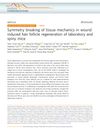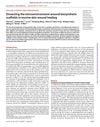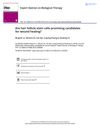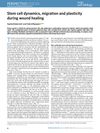Tissue Mechanics Partake in Spatiotemporal Patterning of Wound-Induced Hair Neogenesis in African Spiny Mouse
April 2018
in “
Journal of Investigative Dermatology
”
TLDR African spiny mice can regenerate skin and hair after wounds due to specific tissue mechanics.
The study on the African spiny mouse (Acomys) demonstrated its ability to regenerate up to 70% of its skin, including appendages, after full-thickness skin wounding, with wound-induced hair neogenesis (WIHN) beginning at the wound periphery by post-wound day 15 (PWD15) and later at the center by PWD21. In contrast, WIHN in C57Bl/6 mice occurred only at the wound center. The spatiotemporal stiffness of the spiny mouse wounds increased from 2.35 kPa (center) and 7.87 kPa (periphery) on PWD15 to 7.19 kPa and 11.45 kPa on PWD21, suggesting an optimal tissue stiffness range of 7-12 kPa for WIHN. RNA-seq results indicated upregulation of epithelial-to-mesenchymal transition and inflammation-related genes, but not Runx3 and ECM genes, on PWD15. The spiny mouse's soft mechanical wound characteristics and high collagen III to I ratio ECM expression resembled fetal skin, potentially aiding in reduced inflammation and promoting skin regeneration.




